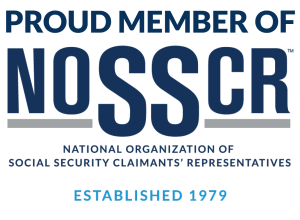The “Achieving a Better Life Experience (ABLE) Account” is now available nationwide. This account allows people who are disabled to save money tax free, without losing SSI and Medicaid benefits. The account is much like a checking account and comes with a debit card.
Individuals Who Qualify for an ABLE Account
- Your disability must have had started before turning 26. This must be documented by medical records or a doctor’s certification that you meet the disability rules or by showing proof of SSI/SSDI eligibility when signing up for an account. Rules on age of disability may be more generous in the future.
How Much You Can Save?
- The disabled person and other people can contribute up to $15,000/ year tax-free. This amount may change from year to year. The total account value cannot exceed $100,000 without affecting SSI eligibility. These numbers might change in the future or be different for different plans in different states.
What Can the ABLE Account Pay For?
- ABLE accounts can be used to pay for “Qualified Disability Expenses” (some examples are education, housing, basic living expenses, financial and legal fees, health and wellness). Beneficiaries must keep track of how the money was used and use the money for qualified expenses. A full list of rules and obligations will be available when you set up an account.
ABLE account vs. a Special Needs Trust (SNT)
A special needs trust (SNT) is another way to save without negative impact on public benefits. To decide what is best for you, learn all of the facts. Here are a few ways that ABLE accounts and SNT’s differ:
| ABLE Account | Special Needs Trust |
| You can set it up yourself | You need a lawyer with expertise in SNT’s |
| Is only for persons disabled before age 26 | Is for disabled persons under age 65 |
| Beneficiary has control | Requires a trustee to distribute funds |
| Can be used for “qualified disability expenses,” including housing | Can be used for anything the trustee thinks is acceptable, except housing and food |
| Can be used for inheritances less than $15,000 | Can be used for inheritances more than $15,000 |
| Contribution limits of $15,000/year, limit of $100,000 total in account | No contribution limits or caps |
| Upon death of beneficiary, balance of funds go to pay back Medicaid | Upon death of beneficiary, funds may be used to repay Medicaid, balance to those designated by the trust |
Financial planning for a disabled person is often complicated. At Kirsch & Clark we can advise you about which account works best in your situation. Mr. Clark is able to draft a special needs trust, if needed and advise on its administration. It is also possible to have an ABLE account and a Special Needs Trust at the same time.
Learning More about ABLE Accounts
Lots of information and examples about the use of ABLE accounts can be found here: https://www.able-now.com/
- In Idaho, eligible residents can set up an account with an out-of-state program (at the date of this post, Idaho does not offer an ABLE program). Ohio is a state that allows residents of other states to open an account. For more information see:
Idaho State Independent Living Council web-site: https://silc.idaho.gov/able-accounts/
Ohio program: https://www.stableaccount.com/benefits/
- For Washington residents, you can set up an account here: https://www.washingtonstateable.com/
